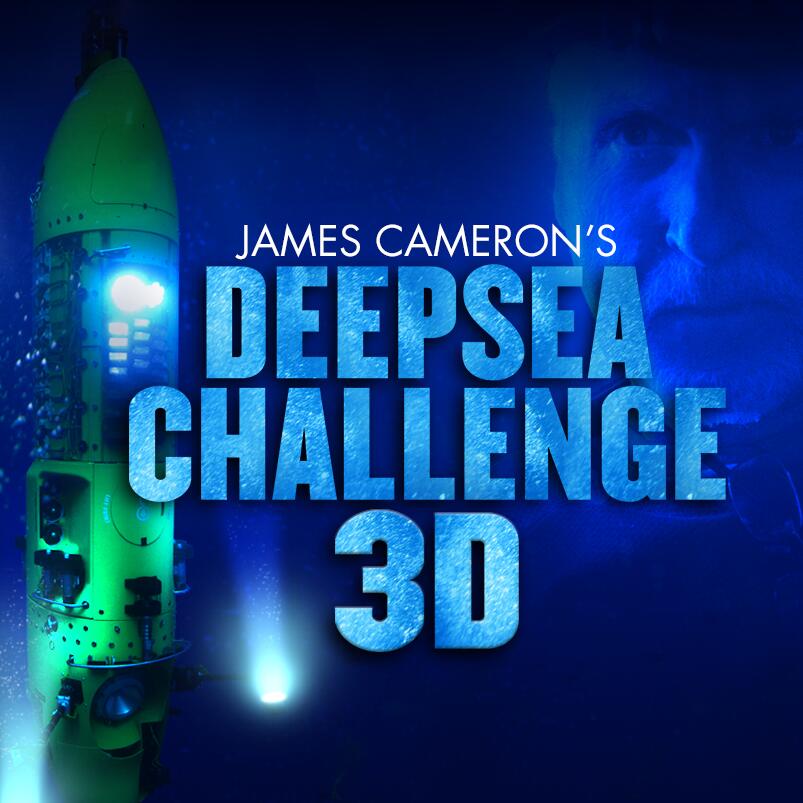There are human footprints on the moon and rovers on Mars, but our deepest oceans remain a mystery. Largely unexplored, these dark depths are Earth’s last frontier, yet they could unlock clues to understanding our planet. That notion inspires a history-making scientific expedition at the heart of a new large format film adventure from National Geographic Studios. On January 16, audiences will voyage to the ocean’s deepest point with the opening of “JAMES CAMERON’S DEEPSEA CHALLENGE 3D,” a celebration of science, courage, and extraordinary human aspiration specially formatted as a new 40-minute giant screen film experience for release in IMAX®, dome theaters, and digital cinemas in museums and science centers around the world. The new film is a companion to the full-length feature documentary of the same name released in August 2014.
Directed by John Bruno, Andrew Wight and Ray Quint, “JAMES CAMERON’S DEEPSEA CHALLENGE 3D” is a story about determination, danger and a journey to the ocean’s greatest depths, in which the risks are astounding and the 3D footage is breathtaking. It follows the scientific expedition led by Academy Award-winning filmmaker James Cameron (Avatar and Titanic), a National Geographic Explorer-in-Residence and veteran of eight deep ocean expeditions — whose boyhood dream was to be an underwater explorer. Presented by James Cameron and National Geographic in association with Earthship Productions, Inc., it is a Wight Expedition Film in Association with Beyond Productions. Executed in partnership with Rolex, with support from the Alfred P. Sloan Foundation, the film is executive produced by James Cameron. Lisa Truitt is executive producer for National Geographic. Andrew Wight and John Garvin are the writers, and Jules O’Loughlin, ACS and John Stokes, ACS, are the directors of photography.
In the new film, giant screen audiences will follow Cameron and his team through the process of designing, building and deploying the DEEPSEA CHALLENGER, a specially designed, spherical-shaped sub custom-built with cutting edge technology and heat-treated steel to protect him from the crushing water pressure he will encounter descending to these hadal depths. At 16,000 pounds per inch, he compares the extreme pressure to perching two Humvees on your thumbnail. The film then chronicles Cameron’s record-breaking dive to a depth of 35,787 feet to the Challenger Deep, the earth’s deepest point, on March 26, 2012.
The DEEPSEA CHALLENGER is not a stunt vehicle made for breaking depth records; it’s designed as a science platform from top to bottom. The submersible is equipped with a hydraulic manipulator arm for taking samples, a sample tray, push cores for collecting sediment, a payload bay for instruments, and two 3-D cameras, on the boom and the arm, for capturing images of the landscape and life-forms in some of the world’s deepest zones.
Through the immersive giant screen experience, audiences enter the submersible with Cameron, plunging into otherworldly underwater realms, diving ever deeper as they accompany him on numerous science gathering missions throughout the film. In Papua New Guinea, he stops to explore how volcanic forces that destroyed one island are the same ones that helped create the deep ocean trench there. Understanding what is happening to the seascape at these depths could help scientists better predict underwater earthquakes and tsunamis, which underscores the importance of designing vehicles that can make such deep dives.
The film then captures the events of Cameron’s history-making solo dive. Risk and danger are ever-present on the expedition–both above the surface and below. A number of potentially life-threatening system failures occur in rapid succession during the key test dive, which could render the sub utterly helpless underwater–causing some heart-pumping moments. The primary launch event also pushes everyone’s abilities to the limit – taking place in high seas at night in conditions that could turn the sub into a 12-ton swinging wrecking ball.
The expedition culminates in Cameron’s risky but momentous solo descent, almost seven miles beneath the ocean’s surface, to the deepest part of the Mariana Trench, the Challenger Deep. Forty miles long and two miles wide, the area is put in context this way by Cameron: “You could put Mount Everest on the bottom and four Empire State Buildings on top of that and not even break the surface,” he says.
DEEPSEA CHALLENGE’s spectacular 3D captures the exhilaration of exploration in the haunting, lunar-like landscape of the Mariana Trench and the bizarre, alien-like sea creatures he observes in the ocean depths throughout the 13 dive expedition–from gelatinous holothurians to shrimp-like amphipods. Researchers are still analyzing the 68 new species discovered during the journey. James Cameron and his team’s bold expedition is an inspiring reminder that there is still much left to explore on this planet and that we learn exciting things when we push our human boundaries.
For details on the film, go to www.nationalgeographic/movies.com. To learn more about the expedition, visit www.DEEPSEACHALLENGE.com; follow on Twitter @DeepChallenge or use #deepseachallenge; or on Facebook at <<https://www.facebook.com/deepseachallenge>>.






























